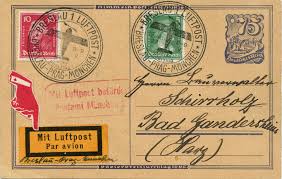Stamp: Postman (15th century) (Berlin 1989)
Postman (15th century) (Berlin 1989)
12 October (Berlin ) within release Welfare: Mail transport through the ages goes into circulation Stamp Postman (15th century) face value 60+30 German pfennig
| Stamp Postman (15th century) in catalogues | |
|---|---|
| Michel: | Mi:DE-BE 852 |
| Yvert et Tellier: | Yt:DE-BE 813 |
Stamp is square format.
Also in the issue Welfare: Mail transport through the ages:
- Stamp - Postman (15th century) face value 60+30;
- Stamp - Brandenburg mail car (approx. 1700) face value 80+35;
- Stamp - Prussian postal official (19th century) face value 100+50;
- Booklet - Booklet-Postman (15th century) face value 5*(60+30);
- Booklet - Booklet-Postman (15th century) face value 5*(60+30);
- Booklet - Booklet-Postman (15th century) face value 5*(60+30);
- Booklet - Booklet-Postman (15th century) face value 5*(60+30);
- Booklet - Booklet-Postman (15th century) face value 5*(60+30);
- Booklet - Booklet-Prussian postal official (19th century) face value 5*(100+50);
- Booklet - Booklet-Prussian postal official (19th century) face value 5*(100+50);
Stamp Postman (15th century) it reflects the thematic directions:
The mail or post is a system for physically transporting documents and other small packages; or, the postcards, letters, and parcels themselves. A postal service can be private or public, though many governments place restrictions on private systems. Since the mid-19th century national postal systems have generally been established as government monopolies with a fee on the article prepaid. Proof of payment is often in the form of adhesive postage stamps, but postage meters are also used for bulk mailing. Modern private postal systems are typically distinguished from national postal agencies by the names "courier" or "delivery service". Postal authorities often have functions other than transporting letters. In some countries, a postal, telegraph and telephone (PTT) service oversees the postal system, in addition to telephone and telegraph systems. Some countries' postal systems allow for savings accounts and handle applications for passports.
Postal history is the study of postal systems and how they operate and, or, the study of the use of postage stamps and covers and associated postal artifacts illustrating historical episodes in the development of postal systems. The term is attributed to Robson Lowe, a professional philatelist, stamp dealer and stamp auctioneer, who made the first organised study of the subject in the 1930s and described philatelists as "students of science", but postal historians as "students of humanity". More precisely, philatelists describe postal history as the study of rates, routes, markings, and means (of transport).


